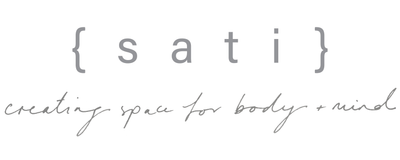Do you want to feel more relaxed, aligned and positive on a daily basis? Do you want to know how it feels to live your life in a slipstream where you trust everything that is happening to you, both good and bad? Do you want to cultivate a more truthful and loving connection with yourself?
It is not too much to want all of this. In fact it is our birthright to experience all of this; to align with joy, peace and love as we move through life. The trouble is most of us don’t know how to bring about these changes, especially when we are often identified (mostly unconsciously) with negative thoughts and emotions. As someone who has experienced the benefits of a daily meditation practice for 8 years, I can say with confidence that meditation is a brilliant place to start. Although I am still perfecting all of the above (it is a process!) I am a changed person thanks to my practice. And you can be too.
If you have done any meditation before you will most likely have discovered that your mind is pretty wild. The ‘monkey mind’ (so called because it swings from branch to branch randomly like a monkey) is the source of most of our problems in life. We are slaves to its whims, which push and pull us in all sorts of unhelpful directions – whims which meditation can make us aware of and help us to transmute. Through meditation we focus our attention on something (the breath is a good tool – see below for a simple breath meditation) freeing up mental space and making way for feelings of peace and wellbeing to arise naturally – and they absolutely will.
My initiation into meditation came in the form of a silent 10 day Vipassana retreat which had - and continues to have - an incredible impact on my life (so much so that I actually use meditation to contextualise my life now; before I learnt to meditate and after I learnt to meditate!) but you don’t have to dedicate 10 days of your life to learn to meditate, you can easily start at home.
And this is the best news of all really; that the tools you need to meditate are literally at your fingertips, ready and waiting to be activated whenever and wherever you are! Literally all you have to do is set aside some time every day (15 minutes is a good place to start) and create some physical and mental space to drop in to the stillness.

An ancient technique
Below is a simple breath meditation that the Buddha taught over 2500 years ago and it is as relevant and beneficial now as it was then. It is called Anapana (‘Ana’ means in-breath and ‘Pana’ means out-breath) and is the pre-cursor to Vipassana. Practice this for 15 minutes every morning or evening and it won’t be long before you notice the transformation in yourself. The more you practice, the more you will find your focus beginning to sharpen and as the mind quietens, you will start to experience a sense of peace and spaciousness.
1) Find a quiet space in your home (this might be time-sensitive if you have children or flatmates). It doesn’t have to be completely silent, it just needs to feel restful; a place where you won’t be disturbed.
2) Sit in any position you find comfortable – cross-legged, on a chair, lying down – any posture that allows you to feel relaxed but alert at the same time.
3) If you are in a seated position make a conscious effort to keep your back and your neck straight.
4) Set an alarm for 15 minutes. Make sure you choose a soft sound to bring you back gently, nothing jarring.
5) Softly close your eyes and keep your mouth gently closed too.
6) Focus your entire attention on the area below the nostrils / above the upper lip. Keep your awareness in this area and notice the breath coming in and the breath going out. Every time a breath comes in, just notice ‘the breath is coming in’ and when the breath is moving out, just notice ‘the breath is moving out’. Don’t try and control the breath; you are just observing your natural, normal breath.
7) If your mind wanders (which I can tell you now it 100% will!) just bring it back to the area of awareness – below the nostrils and above the upper lip – with kindness and compassion. Never give yourself a hard time for getting distracted. If you do find yourself getting annoyed or frustrated, just notice this and don’t judge yourself for it.
And that is it! 15 minutes of your day, dedicated to allowing your mind to become calm and your focus to be on nothing but the peaceful rise and fall of your breath. Though you might find the process of letting thoughts and feelings go and returning your focus to your breath challenging, you are bound to be successful with practice. The more you persevere with patience and compassion, the quicker the benefits will flood into your life!
‘The gift of learning to meditate is the greatest gift you can give yourself in this life. For it is only through meditation that you can undertake the journey to discover your true nature and to find the stability and confidence you will need to live, and die, well. Meditation is the road to enlightenment.’ Sogyal Rinpoche


Leave a comment